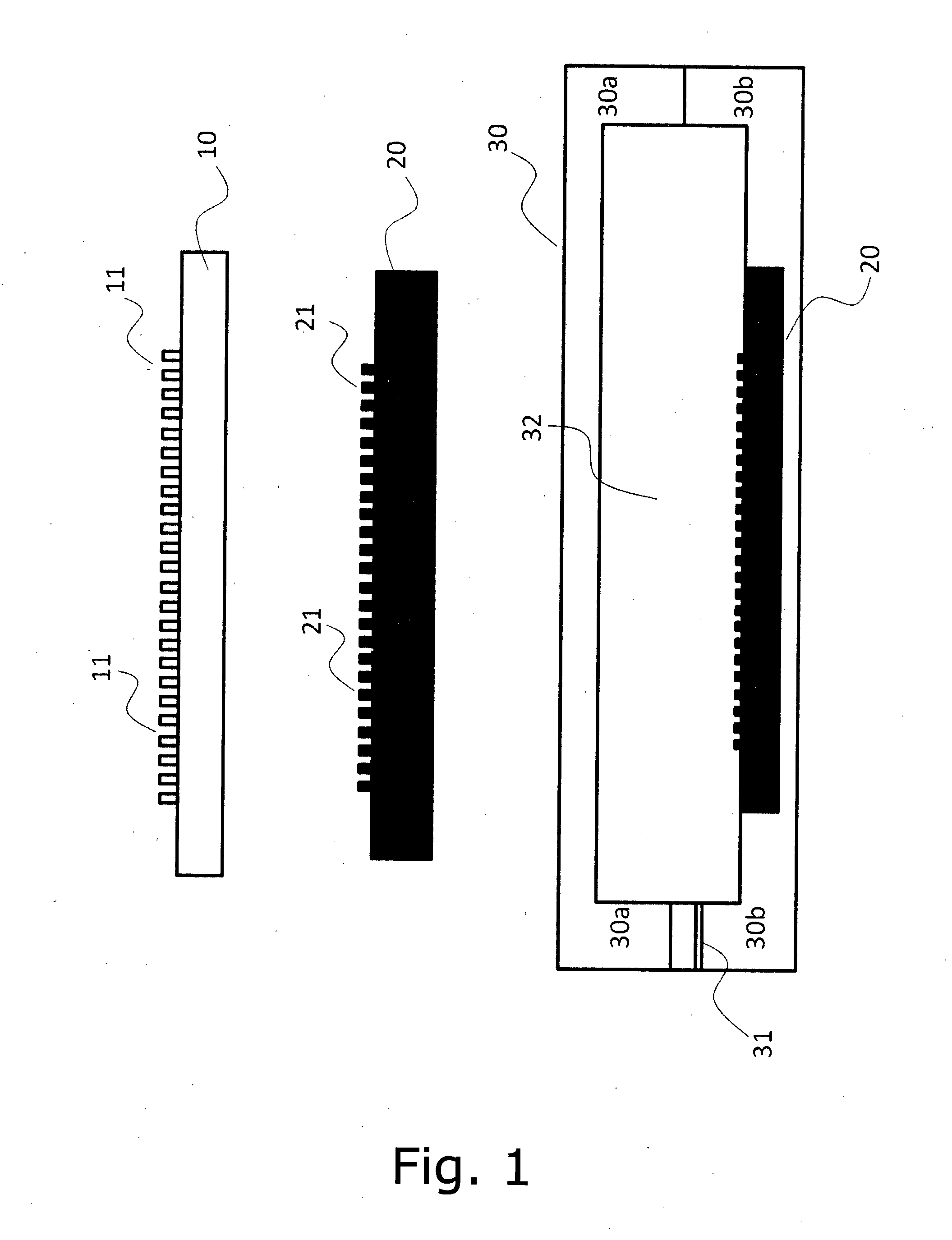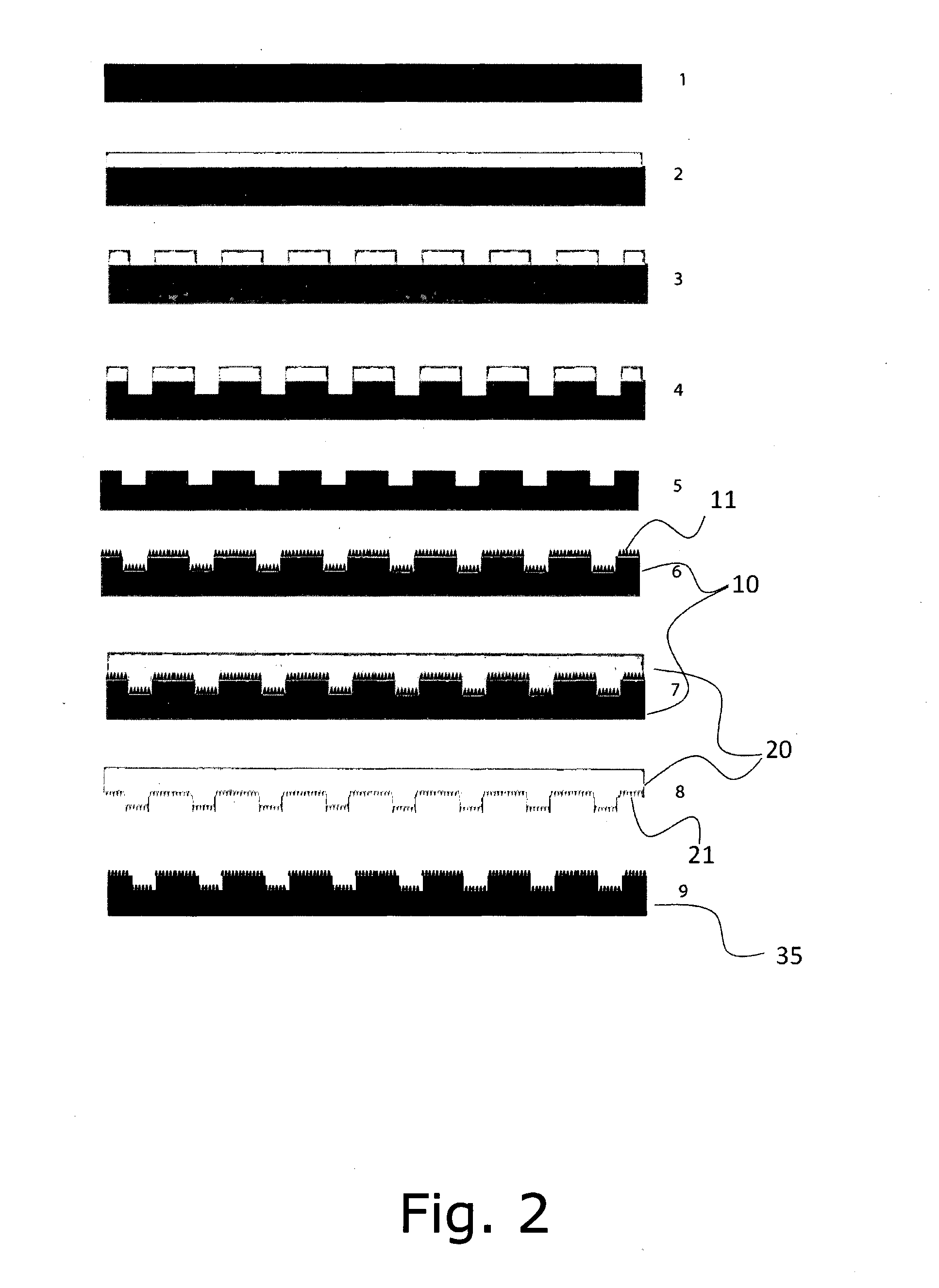Method for manufacturing a tool part for an injection molding process, a hot embossing process, a nano-imprint process, or an extrusion process
a technology of nano-imprinting and injection molding, which is applied in the direction of instruments, photomechanical treatment, optics, etc., can solve the problems of insufficient durability, unsatisfactory health or toxic, or rather complicated manufacturing, and achieve the effect of less complex and fast manufacturing
- Summary
- Abstract
- Description
- Claims
- Application Information
AI Technical Summary
Benefits of technology
Problems solved by technology
Method used
Image
Examples
Embodiment Construction
[0065]FIG. 1 shows a schematic overview of the three main steps forming part of the invention; providing a master structure 10, transferring to a metal insert 20, and adapting to a tool part 30.
[0066]The master structure 10 has a surface area comprising nanometre-sized protrusions 11 (not to scale) with a minimum density of approximately 105 protrusions / mm2, the protrusions being positioned in a non-periodic, irregular pattern i.e. essentially a random or non-deterministic pattern, said protrusions being created by a process comprising:[0067]1) alternating passivation and etching into the master structure, e.g. reactive ion etching by the so-called Bosch method, and / or[0068]2) simultaneous passivation and etching into the master structure, e.g.
[0069]reactive ion etching by the so-called cryogenic method, and / or[0070]3) etching into the master structure, e.g. by a chemical wet etching.
[0071]Subsequently, the pattern of the protrusions 11 is transferred from the master structure 10 in...
PUM
| Property | Measurement | Unit |
|---|---|---|
| size | aaaaa | aaaaa |
| aspect ratio | aaaaa | aaaaa |
| aspect ratio | aaaaa | aaaaa |
Abstract
Description
Claims
Application Information
 Login to View More
Login to View More - R&D
- Intellectual Property
- Life Sciences
- Materials
- Tech Scout
- Unparalleled Data Quality
- Higher Quality Content
- 60% Fewer Hallucinations
Browse by: Latest US Patents, China's latest patents, Technical Efficacy Thesaurus, Application Domain, Technology Topic, Popular Technical Reports.
© 2025 PatSnap. All rights reserved.Legal|Privacy policy|Modern Slavery Act Transparency Statement|Sitemap|About US| Contact US: help@patsnap.com



